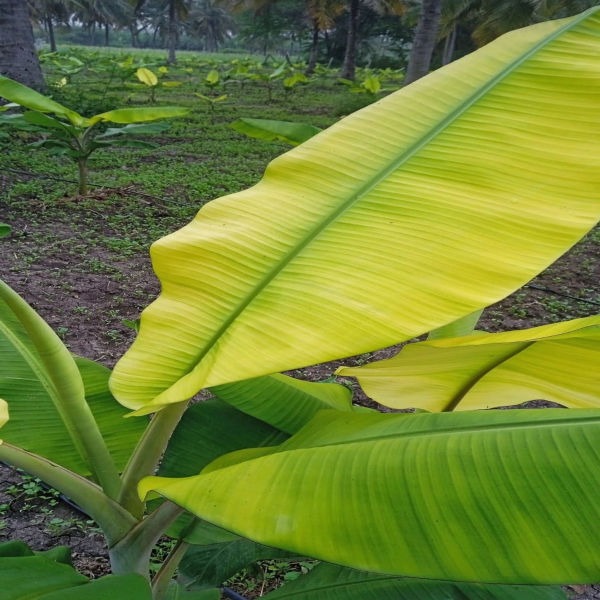
Iron Deficiency in Banana Plants: Causes, Symptoms, and Solutions
What is Iron Deficiency in Banana Plants?
Iron deficiency occurs when banana plants are unable to absorb enough iron from the soil. Iron is essential for photosynthesis and overall plant growth, as it helps in the formation of chlorophyll, the green pigment responsible for absorbing sunlight. Without sufficient iron, banana plants struggle to grow properly.
Causes of Iron Deficiency in Banana Plants
1. Alkaline Soil (High pH): Banana plants prefer slightly acidic soil. In soils with high pH (alkaline), iron becomes less available to the roots, leading to deficiency.
2. Waterlogging: Poor drainage can create waterlogged conditions, reducing oxygen availability in the soil and making it harder for plants to take up iron.
3. Compacted Soil: Heavy, compacted soils can hinder root growth and restrict the plant\\'s ability to absorb nutrients, including iron.
4. Nutrient Imbalance: Excessive application of certain fertilizers, particularly phosphorus, can interfere with iron uptake.
Symptoms of Iron Deficiency in Banana Plants
1. Chlorosis (Yellowing of Leaves): The most common symptom of iron deficiency is yellowing leaves, especially the younger, newer leaves. The veins often remain green, creating a mottled or striped appearance.
2. Poor Growth: Banana plants with iron deficiency often show stunted growth, with smaller leaves and a weakened overall structure.
3. Interveinal Chlorosis: The space between veins turns yellow while the veins themselves stay green.
Solutions for Iron Deficiency in Banana Plants
1. Soil pH Adjustment: If the soil is alkaline, adjusting the pH to slightly acidic (around 5.5–6.5) can make iron more available. Adding sulfur or organic matter can help lower the pH.
2. Iron Supplements: Applying iron chelates or iron sulfate directly to the soil or as foliar sprays can correct the deficiency quickly. Foliar feeding allows the plant to absorb iron directly through the leaves.
3. Improve Drainage: Ensure that the soil has proper drainage to avoid waterlogging. Well-drained soil allows for better root oxygenation and nutrient absorption.
Keywords
soil iron
plants ability
banana plants
nutrient absorption
proper drainage
foliar sprays
organic matter
adding sulfur
slightly acidic
alkaline adjusting
smaller leaves
yellowing leaves
common symptom
absorb nutrients
roots leading
grow properly
absorbing sunlight
make iron
iron deficiency
plant growth
root oxygenation
absorb iron directly
iron uptake symptoms
veins turns yellow
stay green solutions
younger newer leaves
iron sulfate directly
hinder root growth
show stunted growth
remain green creating
green pigment responsible